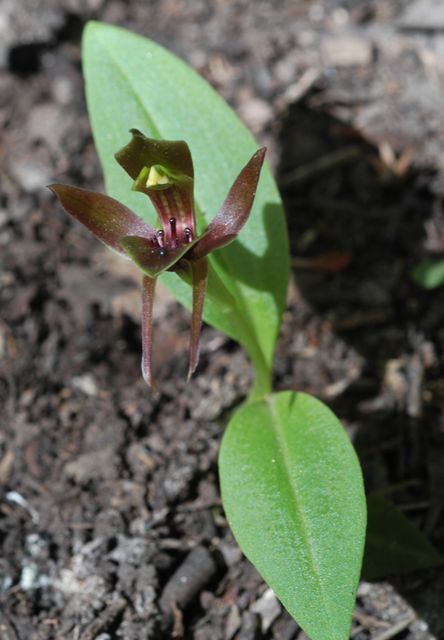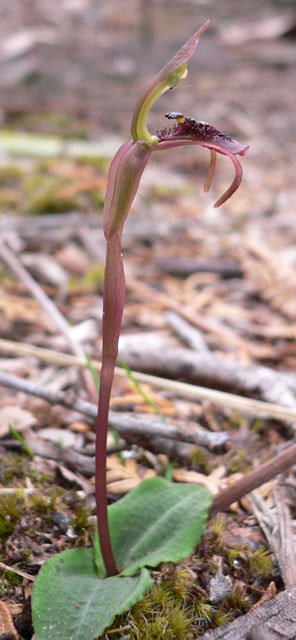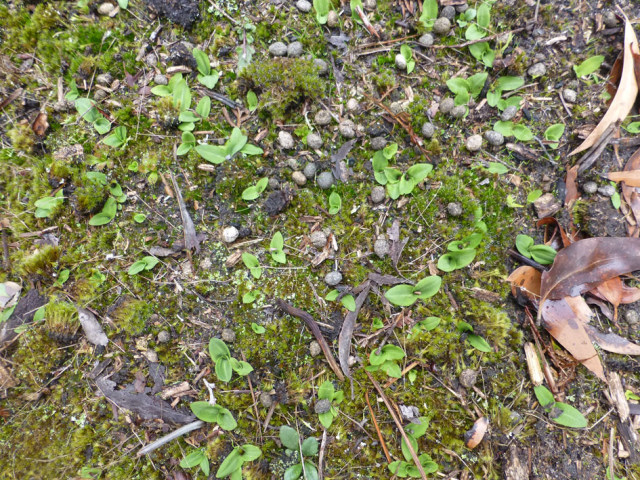Two species of Bird Orchids, widespread but not common in the Anglesea district, are Chiloglottis reflexa Autumn Bird Orchid, which is flowering at the present time, and C. valida Common Bird Orchid that flowers in spring.
The Common Bird Orchid has a slightly vibrating labellum that moves in the wind, resembling a nestling bird waiting with mouth gaping to be fed. It is this feature that has conferred the common name of Bird Orchid on the genus.

Common Bird Orchid
The Autumn Bird Orchid on the other hand does not have this feature, as the labellum is fixed and not trembling.

Autumn Bird Orchid
Both species spend the dry summer months underground as dormant tubers, and form very large dense colonies of paired basal leaves, because they produce plant clones from vegetative tubers.

Leaves of Autumn Bird Orchid
The leaves emerge with the onset of autumn rains, with C. reflexa flowering soon after; but we need to wait until spring before we will see the larger C. valida flowers. C. reflexa is stimulated to flower, by hot fires during the previous summer, while C. valida is inhibited by fire.
The flowers of both species have some similar features, and are yet very different in overall appearance.
- C. valida grows to just 6 cm tall, while C. reflexa grows to 15 cm.
- The dorsal sepal in both species is hooded over the column.
- The labellum in both species is decorated with a number of calli, or glands that emanate odours, attracting male Thynnine Wasps that pollinate the flowers, while attempting to mate with the labellum. The glands on the labellum of C. reflexa may also visually mimic the female wasp.
- The petals on C. reflexa are reflexed against the ovary – giving rise to the name reflexa – while those of C. valida are upright and usually incurved. The name valida refers to the strong robust flower.
- The lateral sepals of C. reflexa are curved beneath the labellum, while those of C. valida project forward.
A third species of Bird Orchid, C trapeziformis is also found in the district. We are not too sure about a fourth species C. trilabra. We need to be more alert in our observations.
Other orchids that are flowering at the present time, are Pterostylis sanguinea Banded Greenhoods, P. parviflora Tiny Greenhoods, P. sp. aff. parviflora Brown Tipped Greenhoods. and Leporella fimbriata Fringed Hare Orchids. After a good flowering season last year, we only managed to locate one flower in our P. sp. aff revoluta Autumn Greenhood colonies.
Orchids just love to confuse us! Please share your orchid observations with us.
Photos and descriptions of all these orchids are documented in Orchids of the Anglesea District available from Angair.
Margaret MacDonald